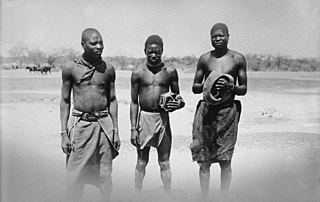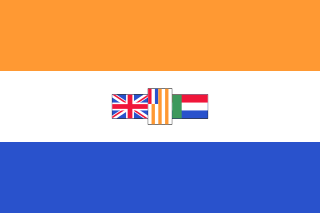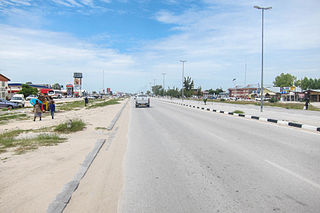
South West Africa was a territory under South African administration from 1915 to 1990, after which it became modern-day Namibia. It bordered Angola, Botswana, South Africa, and Zambia. During its administration, South Africa applied its own apartheid system in the territory of South West Africa.

A Bantustan was a territory that the National Party administration of South Africa set aside for black inhabitants of South Africa and South West Africa, as a part of its policy of apartheid.

The Ovambo people, also called Aawambo, Ambo, Aawambo, or Ovawambo (Kwanyama), are a Bantu ethnic group native to Southern Africa, primarily modern Namibia. They are the single largest ethnic group in Namibia, accounting for about half of the population. Despite concerted efforts from Christian missionaries to wipe out what were believed to be ‘pagan practices’, they have retained many aspects of their cultural practices. They are also found in the southern Angolan province of Cunene, where they are more commonly referred to as "Ambo". The Ovambo consist of a number of kindred Bantu ethnic tribes who inhabit what was formerly called Ovamboland. In Angola, they are a minority, accounting for about two percent of the total Angolan population.
Ovamboland, or Ovambo, was a Bantustan or "homeland" and later a second-tier authority in South West Africa for the Ovambo people during the apartheid period.

Damaraland was a name given to the north-central part of South West Africa, which later became Namibia, inhabited by the Damaras. It was bordered roughly by Ovamboland in the north, the Namib Desert in the west, the Kalahari Desert in the east, and the Windhoek region in the south.

Tswanaland was a bantustan and then later a non-geographic ethnic-based second-tier authority, the Representative Authority of the Tswanas, in South West Africa, in the far central eastern area of the territory around the village of Aminuis. It was intended by the apartheid government to be a self-governing homeland for the Tswana people.

Kavangoland was a bantustan and then later a non-geographic ethnic-based second-tier authority, the Representative Authority of the Kavangos, in South West Africa, intended by the apartheid government to be a self-governing homeland for the Kavango people.

Namaland was a Bantustan and then later a non-geographic ethnic-based second-tier authority, the Representative Authority of the Namas, the in South West Africa, intended by the apartheid government to be a self-governing homeland for the Nama people. Namaland comprised an area of 2,156 km2 (832 sq mi) and was to accommodate the estimated 34,806 southern Namas of the South West African territory.

Ondangwa is a town in the Oshana Region of northern Namibia, bordering the Oshikoto Region. Ondangwa was first established as a mission station of the Finnish Missionary Society in 1890. In 1914, it became a local seat of government.

Koevoet was the counterinsurgency branch of the South West African Police (SWAPOL). Its formations included white South African police officers, usually seconded from the South African Security Branch or Special Task Force, and black volunteers from Ovamboland. Koevoet was patterned after the Selous Scouts, a multiracial Rhodesian military unit which specialised in counter-insurgency operations. Its title was an allusion to the metaphor of "prying" insurgents from the civilian population.

The Diocese of Namibia is part of the Anglican Church of Southern Africa, which is itself part of the Anglican Communion. The diocese, which covers the whole country of Namibia, was originally known as the Diocese of Damaraland. Most of the Anglicans in Namibia live in Ovamboland in the north of the country and speak the Oshikwanyama language.

The Ovambo language is a dialect cluster spoken by the Ovambo people in southern Angola and northern Namibia, of which the written standards are Kwanyama and Ndonga.
Ondonga is a traditional kingdom of the Ovambo people in what is today northern Namibia. Its capital is Ondangwa, and the kingdom's palace is at Onambango. Its people call themselves Aandonga. They speak the Ndonga dialect. The Ondonga kingdom is ruled by an Omukwaniilwa (king), assisted by a council of elders, the Ondonga Traditional Authority. After the death of king Immanuel Kauluma Elifas in March 2019, Fillemon Shuumbwa Nangolo was appointed as successor and subsequently recognised by government.

Martti (Martin) Rautanen was the pioneer of the Finnish Mission in Ovamboland, South West Africa.
Karl Emil Liljeblad was a Finnish pastor, vicar, missionary and educator, and during his final years, a researcher in Folkloristics.

The Finnish Evangelical Lutheran Mission is a Lutheran missionary society formed on January 19, 1859, in Helsinki, Finland. It is one of seven organisations of the Evangelical Lutheran Church of Finland (ELCF) that conduct missionary work. Its first deployments outside Finland were made to Ovamboland, an area that today is cut by the Angola-Namibian border.
Ulla Pirkko Nenonen was a Finnish theologian, missionary with the Finnish Missionary Society and Bible translator, who served in missionary work in Namibia during a 54-year span. Of Finnish missionaries, only Martti Rautanen and his wife Frieda and daughter Johanna have served longer in the mission field.
Lahja Anna-Maija Lehtonen was a Finnish missionary who worked for a long time in Ovamboland, Namibia. She held a master’s degree in the English language from the University of Helsinki, and she was known as the long time English teacher of the Oshigambo High School, which she co-founded together with Toivo Tirronen in 1960.
The 1971–72 Namibian contract workers general strike was a labour dispute in Namibia between African contract workers and the apartheid government. Workers sought to end the contract-labour system, which many described as close to slavery. An underlying goal was the promotion of independence under SWAPO leadership.














